What is nasturtium and how to grow a flower?

Given the outstanding decorative qualities of nasturtium, many are now trying to find out what it is and how to properly grow this flower in the garden and at home. This unique representative of the flora moved to us from South America and is currently successfully grown in the northern and middle latitudes. Domestic flower growers, in addition to large and bright colors, first of all highlight such an important point as the maximum ease of care.

general description
This bright flower came to the countries of Europe from South America. At one time it was discovered in the jungle of Mexico by the conquistadors. Nicholas Monard called this exotic flora "bloody flower" and Indian watercress. At the same time, the plant owes its well-known name to Karl Linnaeus, who determined a place for it in his botanical classification. By the way, the scientist made a figurative comparison of the rounded leaves of the plant with the shields of warriors. A parallel was also drawn between the flowers and the bloody helmets of enemies, which at one time were located on the columns of structures.
The described inhabitant of the South American jungle is known to the Germans as Capuchin... This name is explained by the fact that the cup of the peduncle is in a sense similar to the hood of the monks. Nasturtium belongs to the herbaceous perennials of the family of the same name. But here it is important to take into account that due to poor tolerance to low temperatures in mid-latitudes, it is cultivated as an annual plant. In most cases, it is creeping with flexible, branching shoots that form a fairly large number of lashes up to 5 m long.
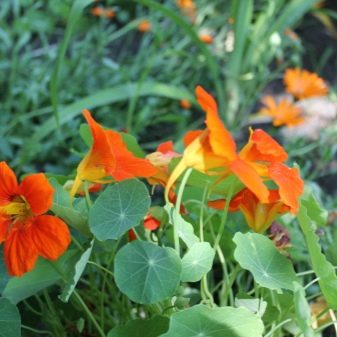
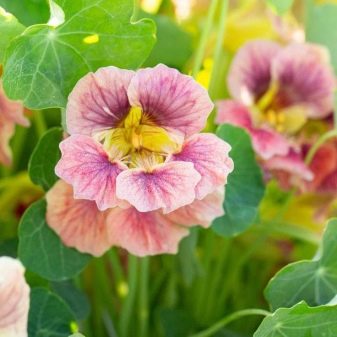
Let's consider the main features of nasturtium.
- Sheet plates have a rounded shape, long petioles, and wavy or smooth edges. Leaves are thyroid, lobed and finger-split. Light veins spread from the center to the edges, giving even more decorative effect to the plant.
- The main decoration of the Capuchins is large (up to 5 cm in diameter) flowers, the color of which varies from yellow to red. They are located singly in the leaf sinuses. One of the key distinguishing features of simple or double flowers is their irregular shape and the presence of a spur. The flower cups, which look like small gramophones, are formed by five petals, in the center of which are a pistil and five stamens. The buds have a rather pungent odor that attracts insects and thus contributes to pollination.
- The colors of shoots, flowers and leaf plates are directly related... For example, if nasturtium has red or purple buds, the foliage will be dark green. At the same time, yellow flowers form a tandem with lighter leaves.
- Root system of rod-type nasturtiums and differs in the presence of few and at the same time rather underdeveloped lateral processes. The roots of the plant are shallow (up to 10-12 cm).
- The plant is large enough (up to 7 mm in diameter) round seedsconsisting of 3 segments. They are distinguished by a light yellow shell and denticles at the edges.
It is worth noting that at the moment the most popular are two garden varieties of nasturtium: climbing and bush. It is noteworthy that culinary experts call this plant a colored seasoning, as well as an Indian salad.The foliage and buds of nasturtium are reminiscent of watercress and spice up the dishes with a spicy aroma.
By the way, there is a fairly wide list of dishes for the preparation of which the leaves and fruits of nasturtium are used.


Views
At the moment, there is a fairly wide list of varieties of nasturtium, many of which are successfully grown, including in our latitudes.... The list of the most popular varieties includes, for example, "Maiden Beauty". We are talking about a photophilous annual capuchin, the bushes of which grow in height and in diameter up to 0.3 and 0.35-0.4 m, respectively. This variety is distinguished by semi-double buds, reaching a diameter of 6 cm and having three colors: yellow, orange and red. Another important feature is the lush bloom, which begins in June and continues until the first frost.
Of the cultivated varietal varieties, certain types of nasturtium are most often grown.
- Foreign or Canary - a plant with vines reaching a length of 3.5 m, which blooms from mid-July to cold weather. Small flowers are yellow in color and corrugated petals.

- Big - differs in branchy and at the same time rather fragile shoots, growing up to 2.5 m. In bush varieties, the stems reach 70 cm in height. A distinctive feature can be called the fact that these flowers reproduce well by self-sowing.

- Small - a species characterized by branchy and relatively thin shoots up to 0.35 m in height, as well as rounded leaf plates with long petioles. Small (no more than 3 cm) buds are yellow in color with small dark blotches. It blooms actively from June to October.

- Shield-bearing - is a semi-shrub of a creeping type with dark green fragile stems that grow up to 4 m. Dark red flowers delight gardeners from June to mid-autumn.
In addition to all of the above, it is worth highlighting such varieties of nasturtium with outstanding decorative qualities as multifoliate, tricolor, azure, as well as ciliate and beautiful. But here it is worth considering the difficulties that may arise when growing these flowers in difficult climatic conditions.
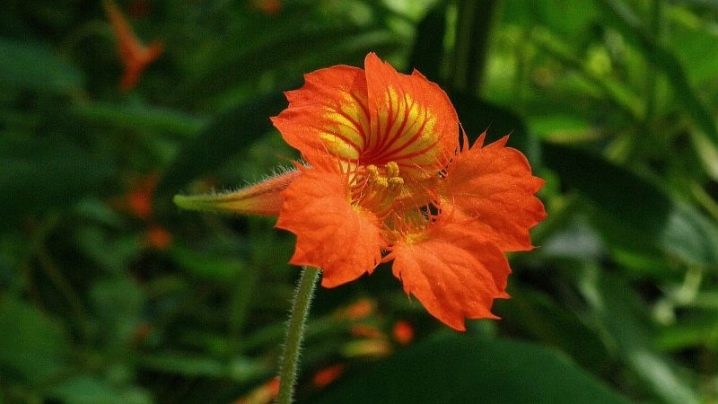
How to collect seeds?
Seed collection is not a complicated process. It is also worth noting that self-collected seeds can be stored for several years without compromising their germination... To get them, leave one whip with dried flowers. It is in them that sufficiently large seeds, which are initially green in color, will form. As they ripen (this period takes from 40 to 50 days from the moment the flower dries), they become whitish.
It is important to collect the material before it has time to crumble on the ground. In other words, self-seeding should not be allowed. It is also worth taking care of a warm and ventilated place for final ripening. Then the seeds are laid out in paper bags and sent to storage.

Landing
Nasturtium is a representative of the seed-grown flower category. It can also be planted with seedlings in the ground. Despite the fact that nasturtium is a perennial plant, we cultivate it as an annual. It is worth noting that the first option is the simplest, but at the same time it does not differ in reliability. The landing algorithm has some peculiarities.
- The material is sown at the end of May, since the return temperature drops below zero can destroy vulnerable seedlings.
- Preliminary preparation of seeds is mandatory. Initially, the treatment is carried out with water for 15-20 minutes at a temperature of 40 to 50 degrees. The next stage is soaking the material for a day in order to soften the shell and thereby accelerate growth.
- Under the seeds, taking into account their size, holes should be dug about 2 cm deep and at intervals of 20 to 30 cm. 2-3 units of seed are placed in each of them.
- If we are talking about planting seeds in regions with a harsh climate, then the soil must be spilled with heated water. Also, the landing will need to be covered with non-woven fabric or film. Young animals are "released" at the very beginning of summer.
- 14 days before transferring to the ground, the seedlings begin to actively harden.
- Flowers are planted in their permanent place most often in early June. They do this together with the pots, that is, they use the transshipment method, which eliminates the risk of injury to the roots. It is important to maintain the interval between future bushes from 20 to 40 cm.
The main advantage of the seedless way of growing nasturtium is that the plant will adapt immediately in a permanent place. But it is worth considering that at the same time it blooms a little later. To achieve early flowering, it will be more rational to sow nasturtium for seedlings. In room conditions, sowing is carried out in late March or early April. Small containers are used as planting containers, as well as cups and peat tablets.
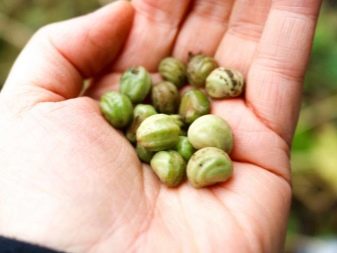

Growing care
Growing chic nasturtiums is, in principle, quite simple. However, it is important to properly care for the plants and not ignore the basic rules and recommendations of experienced florists. When breeding nasturtium, taking into account what she loves, the following techniques will be relevant:
- use for planting loamy and well-drained soils;
- selection of the illuminated place while excluding prolonged exposure to direct ultraviolet rays;
- abundant watering at the stage of active growth and moderate during flowering;
- fertilization;
- timely removal of dried flowers;
- loosening and mulching the soil;
- weed removal.
In addition to all of the above, when forming bushes and compositions, in some situations it will be necessary to tie up shoots. When the latter become excessively long and thin, they are cut off. Also, periodically, you have to cut the flowers, which will help to significantly prolong the flowering process itself. Many beginners are interested in whether it is necessary pinch nasturtium. A similar technique is necessary when it comes to a single plant, since when planting nasturtiums in groups, spectacular compositions are formed.
In some cases, you can transplant flowers to correct the appearance of the flower bed. When performing such procedures, it is important to remember about easily traumatized plant roots. Another important point is the application of the transshipment method. Carrying a flower along with an earthen ball helps to minimize stress.


Watering
The soil should be irrigated only as its surface dries up. With excessive watering, the green mass will begin to actively develop against the background of a decrease in the number of buds. It is also worth considering that in situations with heavy soil, the risk of root decay increases.
Water procedures in hot weather can cause burns when water gets on the sheet plates. The droplets on them begin to work like magnifying glasses. If drip irrigation systems are used, then irrigation is carried out in the evening. In the fall, the amount of moisture is first reduced, and then completely stopped.
Top dressing
At the initial stage of nasturtium growth, the use of nitrophoska will be effective. It is important to remember that this remedy is only beneficial to the plant until the beginning of the flowering period. Also, phosphorus and potash fertilizers are used as top dressings in accordance with the instructions of the manufacturers. As soon as the nasturtium blooms, there is no need to feed it.
Another important point is that it is not recommended to use nitrogen fertilizers that contribute to the growth of greenery.

Diseases and pests
It is noteworthy that due to its phytoncidal properties and a rather pungent odor, the plant is able to effectively fight individual pests and diseases that attack garden plots and vegetable gardens.For example, nasturtium is good at protecting the soil from fungus, and when located next to vegetable beds and under garden trees, it effectively scares off the Colorado potato beetle and whitefly.
However, it is required to constantly monitor the plant itself, for which a potential danger is posed by:
- spider mite;
- aphid;
- caterpillars of butterflies, including cabbage;
- snails.
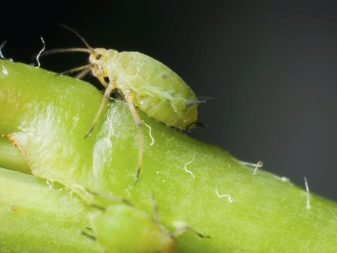

In practice, nasturtium is relatively rarely attacked by harmful insects. But flower growers still have to face certain problems. So, spots may appear on nasturtium, or it grows poorly. Speaking about the most common diseases, it is worth highlighting some ailments.
- Spotting black annular... Brown blotches appear on the leaf plates, which quickly combine into spots that grow rapidly. At the next stage, the leaf plates are twisted into tubes and die off.
- Gray rot. Symptoms in this case will be dry zones on the leaves of a characteristic color.
- Mosaic... The first signs will be greenish streaks that quickly spread over the entire surface.
- Bacterial wilting... Initially, the leaf plates located in the lower part of the plant wither and die off. At the next stage, the entire bush may die.
- Rust... The disease is determined by convex blotches of the corresponding brown color, which eventually transform into "drips".
When the slightest signs of plant infection with fungal, viral or bacterial infections appear, it is necessary remove and destroy all affected segments immediately. At the initial stage of disease, nasturtium can be treated with appropriate chemicals.
The key point in this will be the timely and correct identification of the source of problems. Identifying the causes of the disease helps to stop its development.


Application in landscape design
In order to correctly determine the place for nasturtiums during the registration of the site, it is important to take into account that there are bush, curly and ground cover varieties of these flowers.
- Modern designers successfully use flowers to create both vertically and horizontally oriented compositions.... As a result, these plants, unique in their decorative properties, help to create an original landscape even in the most inconspicuous corners of the sites.
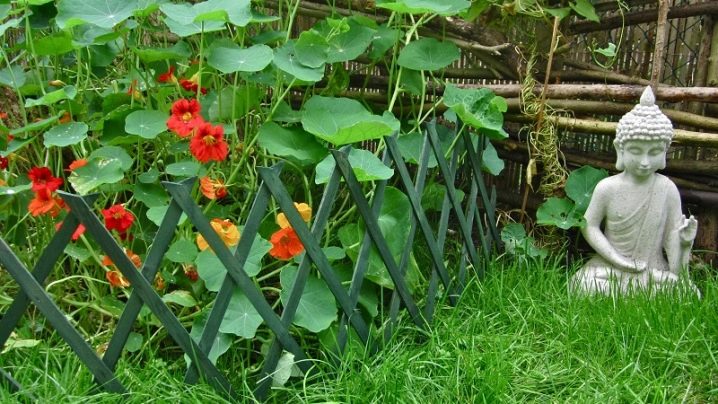
- The green-orange carpet that covers the ground or is located on a trellis looks as impressive as possible... Nasturtium looks equally good in the foreground of a flower garden and in mixborders, as well as braiding the walls of gazebos and other structures. The design of any site will harmoniously complement the group planting of low-growing nasturtiums.

- For combined compositions, bush varieties of flowers are most often used.... As practice shows, they go well with ageratum, delphinium and bells.
At the same time, creeping forms will look best individually, since due to active growth and a large number of lashes, they cover other representatives of the flora.








































































































The comment was sent successfully.